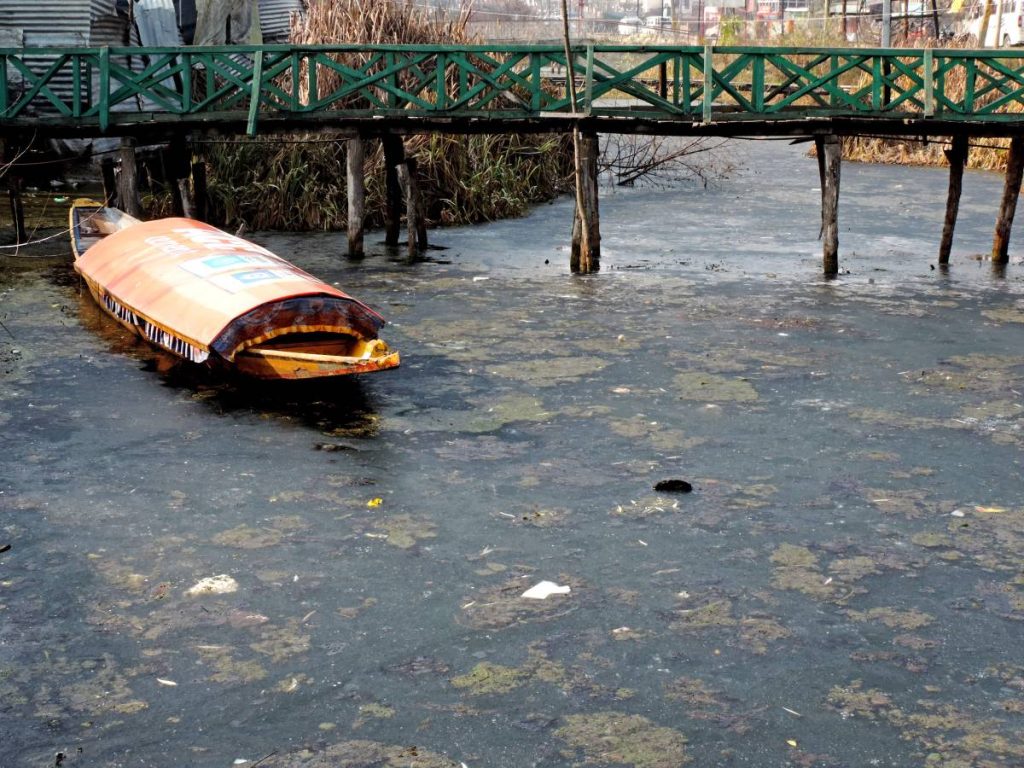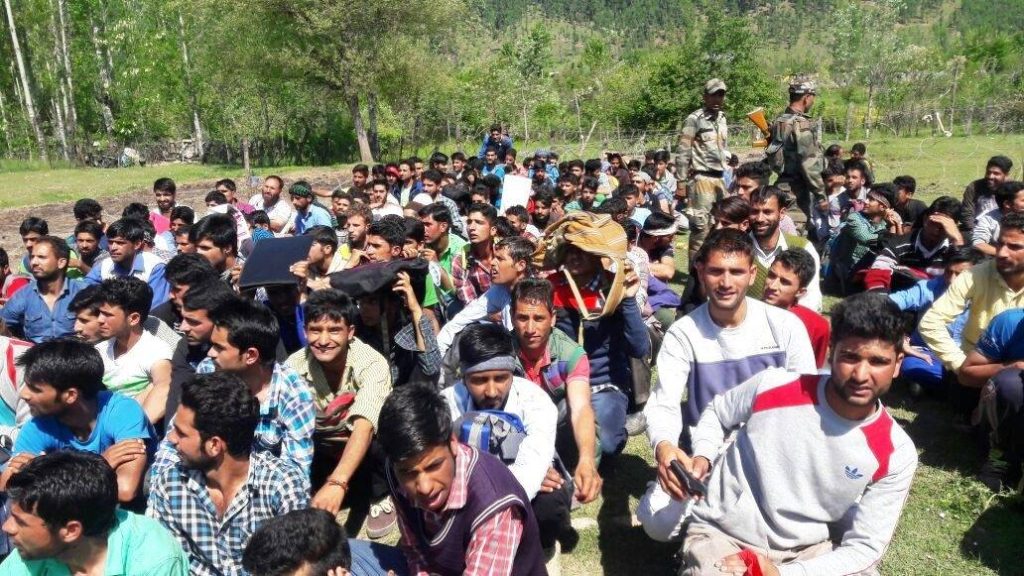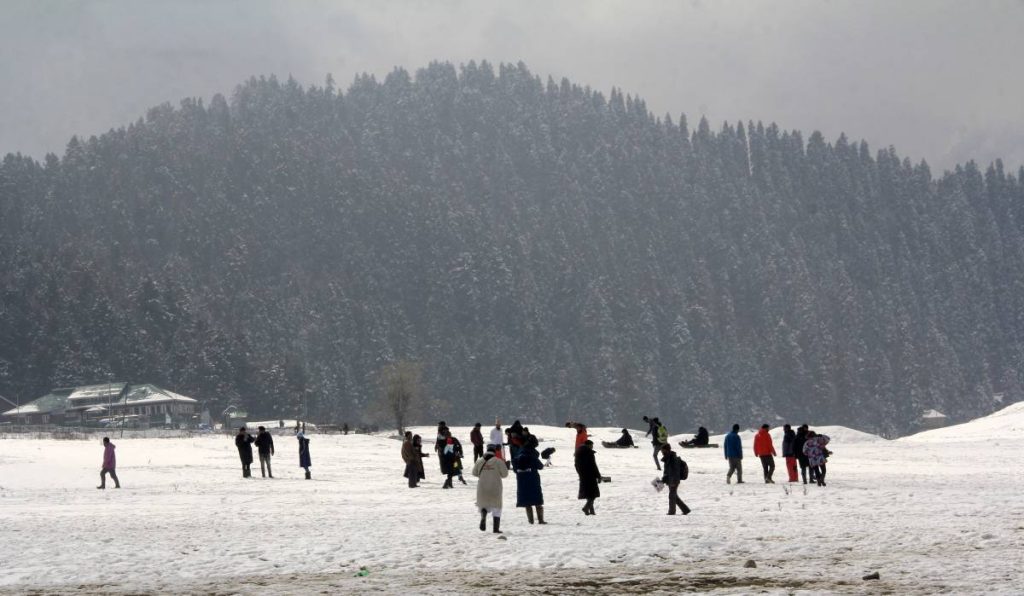A common man in J&K probably for the first time in seven decades is reaping the fruits of being a citizen of a welfare state…reports Asian Lite News
The schemes sponsored by the Central Government to improve the living standards of the people are helping every section of the society in Jammu and Kashmir. The benefits of these formats are trickling down to a common man in the Union Territory for the first time since 1947.
Prior to August 5, 2019 — when the Centre announced its decision to abrogate J&K’s special status and divided it into two Union Territories — the dividends of Centrally sponsored schemes didn’t reach a common man due to Article 370 — temporary provision of Indian Constitution — being in vogue. The Article, which the former rulers claimed provided special privileges to the permanent residents of J&K, acted as a biggest impediment for the natives.

However, the scrapping of Article 370 led to the Centrally sponsored schemes getting implemented in J&K automatically as the stumbling block stood removed.
Results of BJP-led Central government “biting the bullet” are visible as many people in J&K have availed the benefits under Prime Minister Awas Yojana (PMAY- housing for all), Mumkin, Ayushman Bharat Pradhan Mantri Jan Arogya Yojana – SEHAT and other people friendly initiatives launched by the Government of India.
Mumkin, PMAY, SEHAT
In order to create employment the government launched the ‘Mumkin’ scheme — a livelihood programme designed primarily for unemployed young people in the age bracket of 18 to 35, with a special focus on those already working in the transport sector or who want to boost their earnings through self-employment. The programme is a part of the Mission Youth Initiative of the J&K government to uplift, mentor, and provide sustainable livelihood to the youth registered with District Employment and Counselling Centres (DE&CC). Till date hundreds of youth across J&K have availed the benefit of this scheme and have become owners of their own vehicles. They are earning their livelihood and are supporting their families.
Under the ‘Mumkin’ scheme, small commercial vehicles are being provided to the youth with reasonable subsidies both from the manufacturer and the government. As per the guidelines, the banking partner extends the loan facility to the extent of 100 per cent of the on-road price of the vehicle to be purchased. Mission Youth, J&K provides an amount of Rs 80,000 or 10 per cent of the on-road price of the vehicle (whichever is lesser) as upfront subsidy.

Similarly, Pradhan Mantri Awas Yojana (PMAY) too has helped thousands of homeless people to construct houses in rural and urban areas in Jammu and Kashmir. Under PMAY the Government of India aims to construct about 2 crore houses in the country till the end of 2022. The beneficiaries of this scheme include homeless people in villages and poor in urban areas. And J&K is getting its due share.
Another scheme which has evoked tremendous response in J&K is Pradhan Mantri Jan Arogya Yojana (PMJAY)-SEHAT. Ayushman Bharat, a flagship scheme of the Government of India, was launched as recommended by the National Health Policy 2017, to achieve the vision of Universal Health Coverage.
This initiative was designed to meet Sustainable Development Goals (SDGs) and its underlying commitment, which is to “leave no one behind”. The main aim behind the scheme is to extend health insurance coverage to all residents of Jammu and Kashmir.
SEHAT stands for Social, Endeavour for Health and Telemedicine. It is a health insurance scheme for the Union Territory. It provides free-of-cost insurance cover to all the residents of the UT of J&K. It also provides financial cover up to Rs 5 lakh per family on a floater basis to all residents of the UT of J&K.
The benefit of Rs 5,00,000 is on a family floater basis. This means that it can be used by one or all members of the family. It covers medical procedures including oncology, cardiology, nephrology etc, and up to three days of pre-hospitalization and 15 days post-hospitalisation expenses like diagnostics and medicines are also included in the scheme. Till date lakhs of beneficiaries have been registered under this scheme in J&K and they are availing the benefit of cashless treatment in the private hospitals. In December last year the J&K government had empanelled 12 top private hospitals in the UT under the PMJAY-SEHAT scheme.
Welfare State
At present there are many Centrally sponsored schemes operational in Jammu and Kashmir and the benefits of these formats are reaching to the grassroots level. The schemes which used to get caught in official wrangles and files are accessible to the people whom these were meant for. It’s a big change which the Himalayan region has witnessed during the past two years.
A common man in J&K probably for the first time in seven decades is reaping the fruits of being a citizen of a welfare state. Till August 5, 2019, the narrative in Jammu and Kashmir revolved around India-Pakistan relations and holding talks with militants and separatists. The Kashmir based politicians kept a common man busy with such issues which were of no significance or use to him. But these issues were projected in such a way that people thought that whatever their leaders are saying is a “Gospel Truth” and nothing can change in J&K till Pakistan and the militants sponsored by it are taken on board. In fact many people in New Delhi too were under the same illusion. But the government led by Prime Minister, Narendra Modi, shattered the myth by ending the so-called special status of J&K.

Whosoever came into power in J&K after 1947, did little towards integrating the erstwhile princely state with the country. They never made people aware about the ill effects of Article 370, which the Kashmir based politicians used to claim was a bridge connecting J&K with New Delhi. Their agenda revolved appeasing separatists and their bosses sitting across the Line of Control instead of working for the welfare of the common man in J&K.
Welcome to ‘Naya J&K’
In the past two years citizens of J&K have realised what development means. Complete merger of the Himalayan region with the Union of India has brought J&K at par with the other parts of the country. After August 5, 2019, they are eligible for all the welfare schemes that are announced by the Government of India for every citizen of the country. The denizens of J&K have realised that how their leaders kept them away from getting direct financial aid and other benefits from the Centre in the garb of Kashmir being a problem.
The last two years have proven it beyond doubt that Kashmir was never an issue. The root cause of all the problems, i.e., the J&K’s special status has been done away with. The world has opened up for a common man and J&K has opened up for the world. Welcome to “Naya J&K”.
ALSO READ-Naya Kashmir woos global investors

Leave a Reply